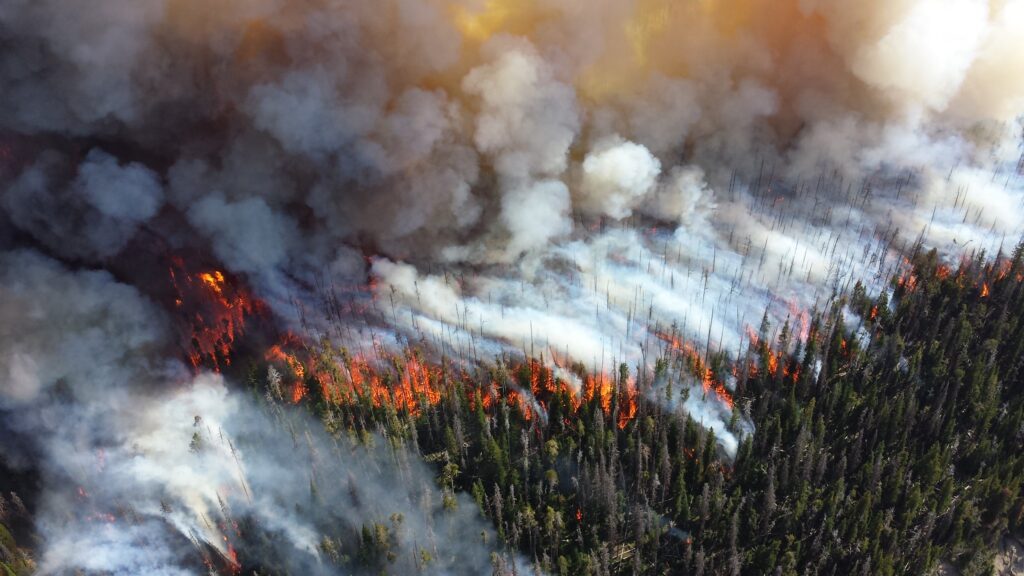This article was originally published in the Washington Examiner.
Congress and the Biden administration have proposed new funding for forest restoration to reduce wildfire severity and risk on national forests. Appropriations alone, however, will not solve the problem of growing wildfire risk across the West. New funding tools and private investment are necessary to move federal forests from a tinderbox to resilient productive forests. Increased partnerships with private and other public agencies are demonstrating a way to enhance forest restoration.
Although the wildfire crisis has multiple causes, one stands clear above the others: the declining state of national forests due to excess fuel buildup, disease and insect infestations, and degraded watersheds. The U.S. Forest Service manages 193 million acres. According to the agency, 80 million of those acres, or 40 percent, need restoration. 63 million of them are at high or very high risk of catastrophic wildfire.
It would take the Forest Service decades to clear this backlog—and then only if it ignored new hazards that arose in the interim. Unfortunately, increased funding for restoration is no silver bullet. As wildfires have worsened in recent decades, the Forest Service’s focus has shifted from forest management to firefighting. While the staff trained to manage and restore forests has declined by more than half, agency fire experts have more than doubled. Additionally, the agency faces numerous regulatory and economic obstacles to ramping up its restoration work.
State and private partners, however, have significant capacity to help and the incentive to do so. National forests provide numerous benefits to surrounding communities, businesses, and conservation groups, giving them a stake in the issue. They provide fresh air, drinking water, habitat for valued wildlife, and opportunities for outdoor recreation. Already, many partners are stepping up to the challenge.
In 2015, the National Forest Foundation, a congressionally chartered nonprofit, and the Salt River Project, a utility company, formed the Northern Arizona Forest Fund to encourage state and private investment in Arizona’s national forests. So far, it has raised $6.2 million, in addition to volunteered expertise and manpower. This has enabled the fund to reduce excess fuels on 13,600 acres, improve 2,600 acres of wetlands, plant 90,000 trees, and reduce erosion along 170 miles of roads and trails.
These partners face many of the same regulatory and economic obstacles as the Forest Service’s restoration work. Federally required environmental reviews can delay projects by years and add significant cost. Litigation can add more delay, expense, and put a project’s future in doubt, especially in California, Montana, and other states within the Ninth Circuit (a federal court perceived as friendly to environmental litigation). And the Forest Service’s inability to make long-term commitments to projects discourages private investment in mills to process the material removed from forests to reduce fuels.
In a new report for the Property and Environment Research Center, we describe concrete policy reforms to enable state and private partners to do more of this important work. These reforms would encourage collaboration rather than conflict, by streamlining bureaucracy and focusing regulatory and litigation resources where they can be most beneficial. They would also give the Forest Service more flexibility to develop partnerships of appropriate length based on a forest’s restoration needs. Finally, they would encourage economic innovation by expanding markets for forest products.
The wildfire crisis cannot be solved overnight. But the best way to seriously reduce the human, economic, and environmental devastation is to unleash private partners to perform needed forest restoration.





